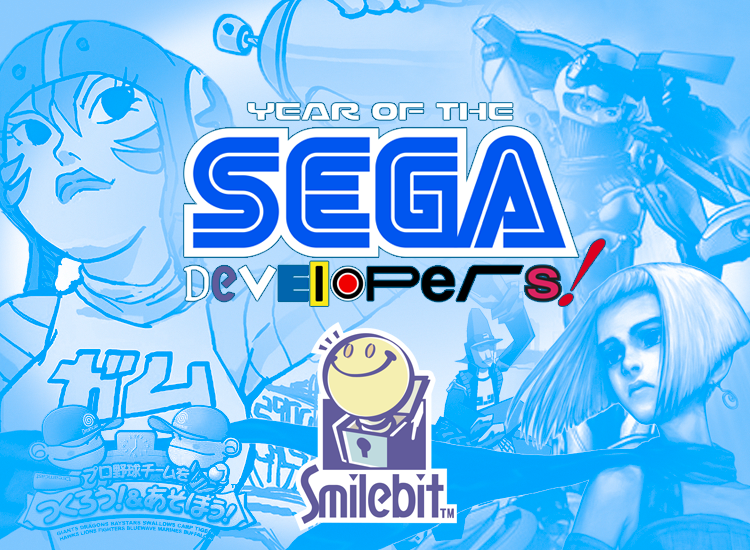
SEGA’s development team Smilebit existed in the public eye for only four short years, yet in that time they managed to create one of the company’s most unique franchises, revived a classic Saturn franchise, contributed to a long running series of popular Japanese sports titles, and managed to create a few new franchises that have gone on to become true hidden gems. It’s fitting that we follow Team Andromeda Month with Smilebit, as Smilebit was actually the bringing together of the SEGA AM6’s Team Aquila, Team Andromeda, and G9 Team (though some staff ended up moving to United Game Artists). This mix of talent lead to Smilebit being primarily tasked with the Let’s Make series of sports titles, franchises that were largely confined to Japan. Utilizing former Team Andromeda staff, the team spearheaded the latest (and thus far last) Panzer Dragoon game. But what really made Smilebit unique were their new franchises including the Jet Set Radio games, Gunvalkyrie, and Hundred Swords.
All month long we’ll be celebrating Smilebit’s eclectic mix of games, celebrating the classics, the lesser known titles, and the ones that never left Japan. Ready to look back? Let’s go!
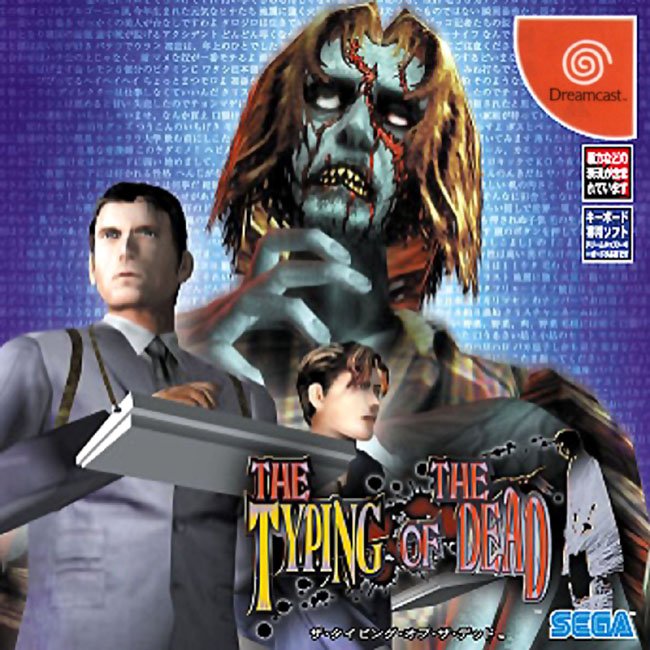 The Typing of the Dead, 2000:
The Typing of the Dead, 2000:
The Typing of the Dead was a reworking of The House of the Dead 2 swapping guns for keyboards to create an arcade take on the “teaches typing” genre. Released to arcades in 1999 by WOW Entertainment, the Dreamcast and PC releases were a collaboration between WOW Entertainment and Smilebit.
Despite the wacky nature of the game, amazingly a Western localization of the game released in 2001, featuring english words and phrases. The Japanese PC release of the game saw two revisions, The Typing of the Dead 2003 and The Typing of the Dead 2004.
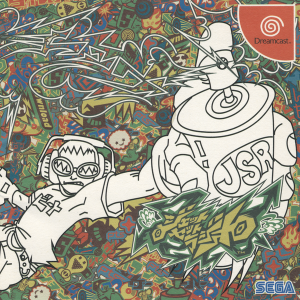 Jet Set Radio, 2000: One of the most unique games released to the SEGA Dreamcast, and the first game to come to mind when one hears ‘Smilebit’, Jet Set Radio was an incredible game for its time and still stands up today. The game was a strange mix of Tony Hawk Pro Skater style gameplay with classic arcade elements and story progression while also bringing in digital paint studio artistic expression. Combine that with a stellar soundtrack and colorful cel shaded graphics and you have… well, Jet Set Radio. It’s a game so unique, it really is quite hard to explain. But hey, we did just that when we held a Jet Set Radio Week last year – learn more about how Jet Set Radio came to be in our retrospective.
Jet Set Radio, 2000: One of the most unique games released to the SEGA Dreamcast, and the first game to come to mind when one hears ‘Smilebit’, Jet Set Radio was an incredible game for its time and still stands up today. The game was a strange mix of Tony Hawk Pro Skater style gameplay with classic arcade elements and story progression while also bringing in digital paint studio artistic expression. Combine that with a stellar soundtrack and colorful cel shaded graphics and you have… well, Jet Set Radio. It’s a game so unique, it really is quite hard to explain. But hey, we did just that when we held a Jet Set Radio Week last year – learn more about how Jet Set Radio came to be in our retrospective.
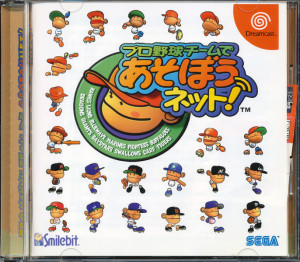 Pro Yakyuu Team de Asobou Net!, 2000: SEGA’s Let’s Make Baseball/Pro Yakyuu Team o Tsukurou! series has had a long run in Japan, but never broke outside the country. The series featured big head and little bodied cartoonish baseball players representing real teams and stadiums. Initially the series was developed by SEGA AM6, which as explained in our Team Andromeda retrospective was sub-divided into Team Aquila which dealt with Victory Goal games, Team Andromeda which handled the Panzer Dragoon series, and G9 Team, who simply produced Pro Yakyuu Greatest Nine ’97.
Pro Yakyuu Team de Asobou Net!, 2000: SEGA’s Let’s Make Baseball/Pro Yakyuu Team o Tsukurou! series has had a long run in Japan, but never broke outside the country. The series featured big head and little bodied cartoonish baseball players representing real teams and stadiums. Initially the series was developed by SEGA AM6, which as explained in our Team Andromeda retrospective was sub-divided into Team Aquila which dealt with Victory Goal games, Team Andromeda which handled the Panzer Dragoon series, and G9 Team, who simply produced Pro Yakyuu Greatest Nine ’97.
Released to the Dreamcast, Pro Yakyuu Team de Asobou Net! and the other games in the series are very import friendly and every fan of unique SEGA titles should try at least one.
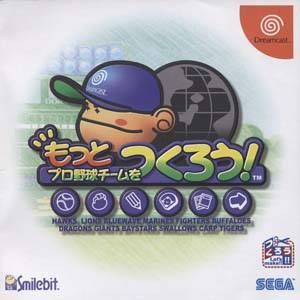 Motto Pro Yakyuu Team o Tsukurou!, 2000: Another title in the Let’s Make Baseball/Pro Yakyuu Team o Tsukurou! series, Motto Pro Yakyuu Team o Tsukurou! released the same year as Pro Yakyuu Team de Asobou Net!, presumably meant to accompany that release. If you know more differences between releases, please share in the comments below.
Motto Pro Yakyuu Team o Tsukurou!, 2000: Another title in the Let’s Make Baseball/Pro Yakyuu Team o Tsukurou! series, Motto Pro Yakyuu Team o Tsukurou! released the same year as Pro Yakyuu Team de Asobou Net!, presumably meant to accompany that release. If you know more differences between releases, please share in the comments below.
Soccer Tsuku Tokudaigou: J.League Pro Soccer Club o Tsukurou!, 2000: Soccer Tsuku Tokudaigou: J.League Pro Soccer Club o Tsukurou! was another title in the long running Let’s Make Soccer/Soccer Tsuku franchise which began in 1996 on the Saturn and continued as recently as 2013 with a Playstation 3 release. Like Let’s Make Baseball/Pro Yakyuu Team o Tsukurou!, the series has largely remained Japan only. However, Europe did see a release in 2006 for the Playstation 2. This version released in Japan to the Dreamcast (2000) and PC (2002), and is considered a remake of the 1996 version, adding network play and other updates.
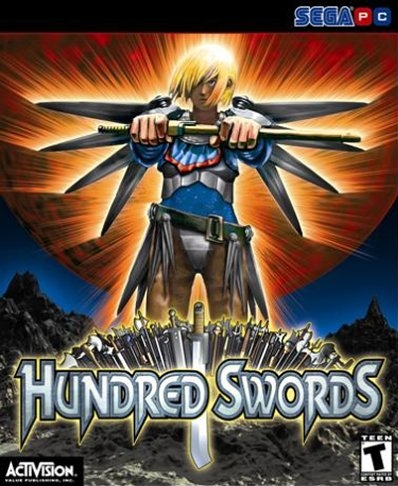 Hundred Swords, 2001: Hundred Swords was a fantasy based real time strategy game released to the Dreamcast in Japan and to PC worldwide. Cited as having simplistic mechanics and, at times, cumbersome controls, the game was praised for telling an epic story with excellent art direction. Hundred Swords features a single player campaign mode which takes the player through the game’s story via a series of linked scenarios. The game also had as online multiplayer mode, allowing up to three players to battle over LAN or a direct TCP/IP connection. While not a groundbreaking title, Hundred Swords was a unique title for Smilebit and is well worth playing if only for the story and art direction.
Hundred Swords, 2001: Hundred Swords was a fantasy based real time strategy game released to the Dreamcast in Japan and to PC worldwide. Cited as having simplistic mechanics and, at times, cumbersome controls, the game was praised for telling an epic story with excellent art direction. Hundred Swords features a single player campaign mode which takes the player through the game’s story via a series of linked scenarios. The game also had as online multiplayer mode, allowing up to three players to battle over LAN or a direct TCP/IP connection. While not a groundbreaking title, Hundred Swords was a unique title for Smilebit and is well worth playing if only for the story and art direction.
Pro Yakyuu Team o Tsukurou! & Asobou!, 2001: Released to the Dreamcast, this Let’s Make Baseball/Pro Yakyuu Team o Tsukurou! title combined the two previous releases Pro Yakyuu Team de Asobou Net! and Motto Pro Yakyuu Team o Tsukurou! and featured additional updates and features for 2001.
Derby Tsuku 2, 2001: Jointly developed with Land Ho! and released exclusively in Japan, Derby Tsuku 2 was an entry in the Let’s Make Derby/Derby Tsuku series of games which simulate horse racing.
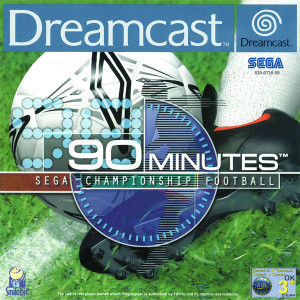 J. League Spectacle Soccer/90 Minutes: Sega Championship Football, 2001: 90 Minutes: Sega Championship Football is a soccer game for the Dreamcast released in Europe, while in Japan it was released as J. League Spectacle Soccer and added additional support for teams created in Soccer Tsuku Tokudaigou and its sequel.
J. League Spectacle Soccer/90 Minutes: Sega Championship Football, 2001: 90 Minutes: Sega Championship Football is a soccer game for the Dreamcast released in Europe, while in Japan it was released as J. League Spectacle Soccer and added additional support for teams created in Soccer Tsuku Tokudaigou and its sequel.
Soccer Tsuku Tokudaigou 2: J.League Pro Soccer Club o Tsukurou!, 2001: The sequel to Soccer Tsuku Tokudaigou: J.League Pro Soccer Club o Tsukurou! of the Let’s Make Soccer/Soccer Tsuku series, released exclusively to the Japanese Dreamcast and featuring updated rosters and new gameplay elements.
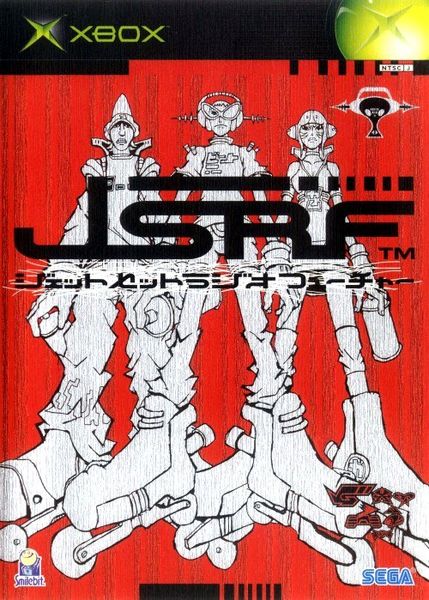 Jet Set Radio Future, 2002: Breaking from a long run of their many Let’s Make sports titles, Smilebit returned to the world of Tokyo-to with the sequel to Jet Set Radio, Jet Set Radio Future (also referred to as JSRF) released to Microsoft’s Xbox. Less of a sequel, and more of a reimagining (or more fittingly a remix), the entire world of Jet Set Radio was given a slightly futuristic feel featuring returning characters with new designs, brand new characters, larger worlds, and new gameplay mechanics.
Jet Set Radio Future, 2002: Breaking from a long run of their many Let’s Make sports titles, Smilebit returned to the world of Tokyo-to with the sequel to Jet Set Radio, Jet Set Radio Future (also referred to as JSRF) released to Microsoft’s Xbox. Less of a sequel, and more of a reimagining (or more fittingly a remix), the entire world of Jet Set Radio was given a slightly futuristic feel featuring returning characters with new designs, brand new characters, larger worlds, and new gameplay mechanics.
Rather than timed stages, the game embraced an open world setting. Graffiti, which was handled by thumb stick movements in the original, was simplified to a single button, and enemy battles took place separately from stage exploration and graffiti tagging. Despite these many changes, JSRF retains much of what made Jet Set Radio such a unique experience and if anything the changes make JSRF just as fun and exciting as experiencing the original for the first time.
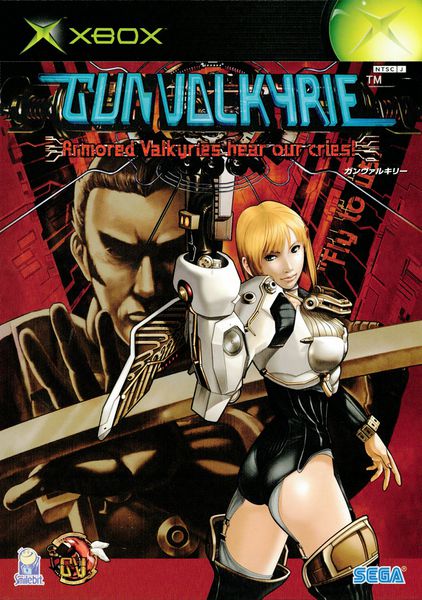 Gunvalkyrie, 2002: Gunvalkyrie is a third-person shooter released to the Xbox, though originally the game was planned to be released for the Dreamcast. Taking place in an alternate 1906 where the British Empire rules the Earth and maintains several off world colonies, the game features an “elec-punk” art style (part steampunk, part electric). The reason for this leap forward in technology is thanks to Halley’s Comet which crash landed on Earth in 1835, offering humans a new energy source and giving select humans the gift of superhuman abilities – dubbed “Halley’s Chosen”. Players assume the roles of Kelly and Saburouta, members of an elite military force within the GunValkyrie (GV) Organization which is ran by the mysterious Dr. Hebble Gate who was the first of “Halley’s Chosen”.
Gunvalkyrie, 2002: Gunvalkyrie is a third-person shooter released to the Xbox, though originally the game was planned to be released for the Dreamcast. Taking place in an alternate 1906 where the British Empire rules the Earth and maintains several off world colonies, the game features an “elec-punk” art style (part steampunk, part electric). The reason for this leap forward in technology is thanks to Halley’s Comet which crash landed on Earth in 1835, offering humans a new energy source and giving select humans the gift of superhuman abilities – dubbed “Halley’s Chosen”. Players assume the roles of Kelly and Saburouta, members of an elite military force within the GunValkyrie (GV) Organization which is ran by the mysterious Dr. Hebble Gate who was the first of “Halley’s Chosen”.
The game features a unique duel analog control scheme, which can be difficult to master and is cited as the reason for the game’s steep learning curve. But once mastered, Gunvalkyrie is an action-packed game featuring various alien worlds and freakish insects waiting to be blasted. As Smilebit Month continues, we’ll be focusing more on this under-appreciated title.
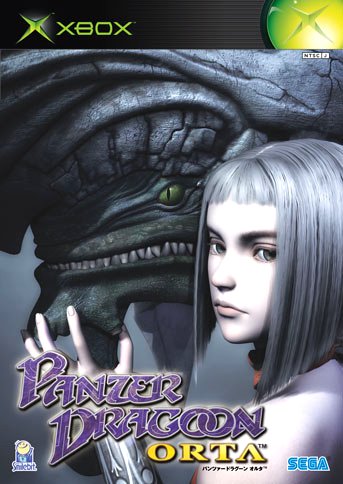 Panzer Dragoon Orta, 2002: Released to the Xbox, Panzer Dragoon Orta brought players back to the world of Panzer Dragoon after the franchise nearly skipped a generation. Orta didn’t introduce new ideas so much as it retooled and reincorporated ideas from the Saturn trilogy, creating a new kind of rail shooter that is practically a breed of its own. The dragon morphing from Saga became three different dragon forms, each with their own attributes: the Heavy Wing unleashes a barrage of heavy attacks, the glide wing was nimble and fast and the base wing was balanced in speed and power.
Panzer Dragoon Orta, 2002: Released to the Xbox, Panzer Dragoon Orta brought players back to the world of Panzer Dragoon after the franchise nearly skipped a generation. Orta didn’t introduce new ideas so much as it retooled and reincorporated ideas from the Saturn trilogy, creating a new kind of rail shooter that is practically a breed of its own. The dragon morphing from Saga became three different dragon forms, each with their own attributes: the Heavy Wing unleashes a barrage of heavy attacks, the glide wing was nimble and fast and the base wing was balanced in speed and power.
Each dragon form could evolve individually, allowing players to choose how they wanted to play. Orta also came packed with a significantly expanded Pandora’s Box, which now had a comprehensive encyclopedia of Panzer’s world, a variety of side missions, a side story centering on a boy named Iva, and even a complete and flawless port of the original Panzer Dragoon game. Orta was arguably the zenith of the Panzer Dragoon franchise’s rail shooter entries. At the very least, it acted as a great send off to a legendary franchise.
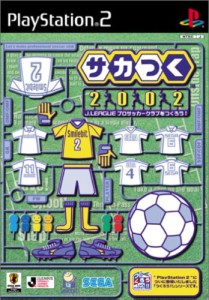 Soccer Tsuku 2002: J.League Pro Soccer Club o Tsukurou!, 2002: This Let’s Make Soccer/Soccer Tsuku game introduced the long-running Japanese franchise to the Playstation 2, where it saw additional titles from Smilebit in 2003 with J.League Pro Soccer Club o Tsukurou! 3 and 2004’s J.League Pro Soccer Club o Tsukurou! ’04.
Soccer Tsuku 2002: J.League Pro Soccer Club o Tsukurou!, 2002: This Let’s Make Soccer/Soccer Tsuku game introduced the long-running Japanese franchise to the Playstation 2, where it saw additional titles from Smilebit in 2003 with J.League Pro Soccer Club o Tsukurou! 3 and 2004’s J.League Pro Soccer Club o Tsukurou! ’04.
Following SEGA’s reorganization and the dissolving of Smilebit, the series continued to be developed by members of the team as recently as 2013 with a Playstation 3 release.
Pro Yakyuu Team o Tsukurou! 2, 2003: The Let’s Make Baseball/Pro Yakyuu Team o Tsukurou! games also found a home on the Playstation 2 with the release of Pro Yakyuu Team o Tsukurou! 2 and the followup Pro Yakyuu Team o Tsukurou! 2003. Despite being the 2002 title, Pro Yakyuu Team o Tsukurou! 2 released early 2003 while the true 2003 title Pro Yakyuu Team o Tsukurou! 2003 released later that same year, thus explaining the odd numbering of 2 followed by ’03. Like previous games in the series, players had cartoonish limbless big heads and little bodies.
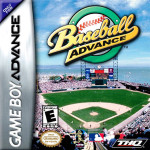 Greatest Nine/Baseball Advance, 2002: Published by SEGA in Japan and by THQ in the US, this Game Boy Advance title was the only game from SEGA’s Greatest Nine series to release outside of Japan. Retitled Baseball Advance and sporting a logo similar to the World Series Baseball series of games, the game features 30 MLB teams, four stadiums, and four gameplay modes: Exhibition, Season, Playoffs, All-Star.
Greatest Nine/Baseball Advance, 2002: Published by SEGA in Japan and by THQ in the US, this Game Boy Advance title was the only game from SEGA’s Greatest Nine series to release outside of Japan. Retitled Baseball Advance and sporting a logo similar to the World Series Baseball series of games, the game features 30 MLB teams, four stadiums, and four gameplay modes: Exhibition, Season, Playoffs, All-Star.
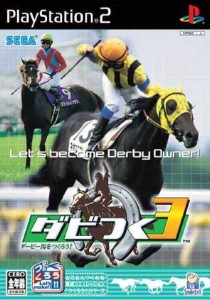 Derby Tsuku 3: Derby Uma o Tsukurou!, 2003: Co-developed once again with Land Ho!, Derby Tsuku 3: Derby Uma o Tsukurou! brought the Let’s Make Derby/Derby Tsuku series of games to the Sony Playstation 2 and the Nintendo Gamecube in Japan, making it the only Gamecube game to bear the Smilebit logo. The series continued following the reorganization of SEGA’s development teams with two sequels, both exclusive to the Playstation 2 in Japan. The Derby Tsuku series saw its last title in 2006.
Derby Tsuku 3: Derby Uma o Tsukurou!, 2003: Co-developed once again with Land Ho!, Derby Tsuku 3: Derby Uma o Tsukurou! brought the Let’s Make Derby/Derby Tsuku series of games to the Sony Playstation 2 and the Nintendo Gamecube in Japan, making it the only Gamecube game to bear the Smilebit logo. The series continued following the reorganization of SEGA’s development teams with two sequels, both exclusive to the Playstation 2 in Japan. The Derby Tsuku series saw its last title in 2006.
J.League Pro Soccer Club o Tsukurou! Advance, 2002: A Japanese-only Let’s Make Soccer/Soccer Tsuku series game for the Game Boy Advance. Unlike other platforms which saw many Let’s Make Soccer/Soccer Tsuku titles, this release remains the franchise’s only Game Boy Advance appearance.
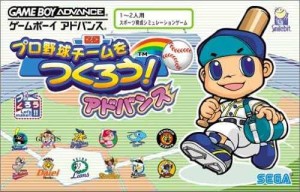 Pro Yakyuu Team o Tsukurou! Advance, 2002: A Japanese exclusive, this game was the only Let’s Make Baseball/Pro Yakyuu Team o Tsukurou! title released to the Game Boy Advance. Unlike other games in the series, the players were less stylized, featuring limbs and more child-like features.
Pro Yakyuu Team o Tsukurou! Advance, 2002: A Japanese exclusive, this game was the only Let’s Make Baseball/Pro Yakyuu Team o Tsukurou! title released to the Game Boy Advance. Unlike other games in the series, the players were less stylized, featuring limbs and more child-like features.
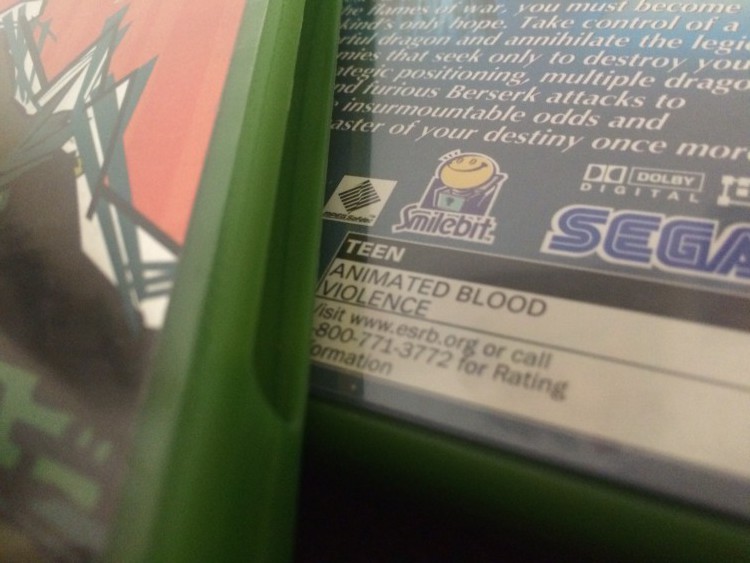
As evidenced, Smilebit released a lot of games over the course of four years. Many were from the long running Let’s Make series, and while most titles were Japanese exclusives they’re well worth an import – particularly the Let’s Make Baseball/Pro Yakyuu Team o Tsukurou! Dreamcast releases. Smilebit also created some truly amazing games with both Jet Set Radio titles, Panzer Dragoon Orta and Gunvalkyrie and even managed to try their hand at a strategy RPG with Hundred Swords.
Stick with us all month long as we pay tribute to the many games of Smilebit! In the comments below, share your Smilebit memories and, as always, if you have a correction to our retrospective please let us know!
Ad:

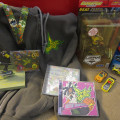
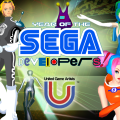
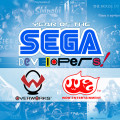
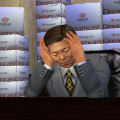
Hundred Swords is interresting because I read a long time on an old GameSpot Article. that it was originally demonstrated as an arcade title. An Arcade RTS woudn’t come back for Sega until 2005, and that RTS became long running since then.
Of course the sports brand of games contunue to this day, as you mentioned.
Also while really completly different, the Yakuza series and also Binary Domain carries that “premiere quality” console title that the Panzer Dragoon games on Saturn and SmileBit games on Xbox had.
That’s sorta my take on how SmileBit’s legacy continued.
Was Ollie King Smilebit?
Nope, by 2004, the non-sports staff was transferred to Amusement Vision.
Ollie King was 03. Seems like it was developed by Smilebit and Amusement Vision together.
http://www.ign.com/articles/2003/09/11/jamma-2003-ollie-king
It was released in 2004, and had the “AV” logo
While I know that Ollie King had several members of Smilebit working on it, in the end it was released as a AV title so I put it in their softography.
I did do research, trying to find official mentions of Smilebit in the game either on press releases or on ads or in legal copy, but I came up empty handed. Everything was AV logos and copyright Amusement Vision. Regarding dates, it looks like the game was revealed September 2003 at the JAMMA arcade show and while I can’t find a concrete release date, October 2003 has been thrown around a lot as the worldwide release date. It is a bit surprising to see the game revealed and released within 2 months, which makes me question that worldwide date. Perhaps it was being tested in a few locations in October and then saw a wider release in 2004?
IGN’s report from JAMMA, which can be seen here http://www.ign.com/articles/2003/09/11/jamma-2003-ollie-king mentions Smilebit but I’m not sure who or what gave them that info. Of course, looking at the game it screams Jet Set Radio Future, but did SEGA actually tell them it was a Smilebit game? Was it in a press release? Was it in the video linked on the above article but unavailable to download?
IGN said: “Unfortunately, details on the game are scarce. Sega didn’t provide any documentation on the title, so all we have to go on is what we could determine from the brief video shown at the show. Ollie King seems to be set up somewhat like a racing game, with your speeding through a course filled with other skateboarders and earning points by performing tricks. Up to four players will be able to play simultaneously.”
Which makes me wonder if IGN and other outlets simply assumed it was going to be credited to Smilebit, but it was AV all along. Smilebit was releasing games as late as June 2004 with “J.League Pro Soccer Club o Tsukurou! ’04”, so its not as though Ollie King released after they dissolved and thus the credit was shifted to AV.
To end my longwinded comment, my speculation is: AV had the arcade experience, Smilebit did not. Smilebit staff worked with AV and it is an AV game, as SEGA shuffling about staff was a common thing at the time. Ollie King is just as much a Smilebit game as Panzer Dragoon Orta is a Team Andromeda game.
Regardings the official release date, the japanese product page had 2004:
http://sega.jp/arcade/olliking/
at the end of the page
© SEGA, 2004
I Had no idea Hundred Swords was released worldwide and on PC… I may need to check that.
And Gunvalkyrie’s control was not that hard on its day, the problem is we are too used to the standard FPS/TPS pad controls of today that it is inevitable to think that it could work better with that layout playing it now. And gameplay-wise Saburota and Kelly were two differed worlds, Saburota was hard, but a beast and the overkill character until Kellie lvl 3 that was practically a goddess.
It was released November 03. Smilebit wasn’t disolved until July 04.
I’m not saying it was exclusively Smilebit, but I do think they were heavily involved. The game was even described as a spiritual successor to JSR at the time.
hideki naganuma is the artist who got me into video game music